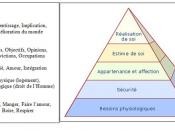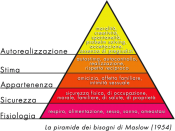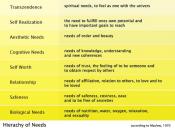Hierarchy of Needs (Maslow's)Maslow theorized that if he could figure out what made productive people work, he could apply the technique to motivate others, thus creating the hierarchy of needs (Peak, 2007, p. 38).
A. Example: Success depends on motivation, Peak (2007) cites Sam Walton as a unique example because he "solicited-and valued-employee input" when he went to his store and talked with the night laborers inquiring about their physical needs. (p. 17). The Hierarchy of Needs (1943) (Maslow 1908-1970) was incorporated into Systems Management (1960's) is a strategy that integrated two earlier systems, scientific management and human relations management helped bring the two strategies together to achieve both social goals of employees and managers productions goals. System management holds that effectiveness is met through interdependence; innovation, overcoming conflict and change; and multitask not only skill but "people, money, time, and equipment." (Peak, 2007, p. 38).
A. Scientific management, a true authoritarian style, developed by Taylor at Bethlehem Steel (1898), researched time v.
motion creating piecework, the precursor to the assembly line, such as Henry Ford's company. The dictatorial control of labor brought the need for B. human relations management encompassing1. Maslow's Hierarchy of Needs evolved from the2. Hawthorne studies of human motivation and management for task and for people.
C. Human relations management studied at Hawthorne Works in Chicago at Western Electric (1920's), (formerly telegraph, afterward AT&T, Bell and Lucent) found social or group rewards motivated employees as teamwork. The Hawthorne Effect is still attributed to half of all successful training sessions (Weber, 2002) and evoked more inquiry into what motivates workers especially by Maslow' Hierarchy of Needs because if human needs are met, motivation is intrinsic. Even Herzberg's Motivation-Hygiene (Maintenance) Theory incorporated Maslow's Hierarchy of Needs in that when basic occupational standards are met (e.g. "adequate pay, benefits,



Complete essay
This essays seems to cover the subject completely. Great bibliography.
0 out of 0 people found this comment useful.